Monday, August 30, 2010
2009 New Impact Factors for fire related journals
The impact factor, one of the measures available to rank journals, is the frequency with which the "average article" in a journal has been cited in the previous two years. It is calculated dividing the number of citations to papers published in the previous two years by the total number of items published during the same period. In order and for fire related journals, these are:
- Progress in Energy and Combustion Science 12.440
- Journal of Hazardous Materials 4.144
- Proceedings of the Combustion Institute 3.510
- Combustion and Flame 2.923
- International Journal of Wildland Fire 1.901
- Building and Environment 1.797
- Fire Safety Journal 1.259
- Engineering Structures 1.256
- Experimental Thermal and Fluid Science 1.234
- Fire and Materials 1.196
- Combustion Science and Technology 1.142
- Journal of Structural Engineering 0.928
- Journal of Fire Science 0.860
- Fire Technology 0.366
- Journal of Fire Protection Engineering 0.296
Clarification (derived from the wikipedia):
The 2009 impact factor of a given journal is equal to A/B. Where A is the number of times articles published in 2007 and 2008 were cited during 2009, and B is the total number of papers published by that journal in 2007 and 2008.
Sunday, August 29, 2010
Reaction to fire by Chimpanzees vs Homo-Nighclubis
 The use and control of fire - unique human trait in the animal kingdom according to Goudsblom, (1986) - are hypothesized to correlate with an increase in intellectual complexity (ref). It is believed that humans may possess evolved psychological mechanisms dedicated to controlling fire and apparently such mastery entails some degree of self-restraint from the urge to flee from a fire. This is in contrary to the general fire avoidance behavior associated with other animals (Goudsblom, 1986).
The use and control of fire - unique human trait in the animal kingdom according to Goudsblom, (1986) - are hypothesized to correlate with an increase in intellectual complexity (ref). It is believed that humans may possess evolved psychological mechanisms dedicated to controlling fire and apparently such mastery entails some degree of self-restraint from the urge to flee from a fire. This is in contrary to the general fire avoidance behavior associated with other animals (Goudsblom, 1986). | Chimpanzees interpretation (by Jill D. Pruetz & Thomas C. LaDuke) | "Nightclub" Humans interpretation (by Fire Safety Engineers) |
| Chimpanzees at Fongoli calmly monitor bush fires at close range and change their behavior in anticipation of the fire’s movement. | Nightclub humans excitedly monitor the disco fire at extremely close range and change their behavior in anticipation of the DJ and green laser movement. |
| We interpret the chimpanzees’ behavior as being predictive rather than responsive in that they showed no signals of stress or fear other than avoiding the fire as it approached near them. | Same here, save that instead of avoiding the fire some kind of fun behavior and willingness to touch it is evidenced in the initial stages of the incident. |
| Therefore, we maintain that they were predicting that the fire would continue its pace of burning and its movement and were unconcerned, for example, that it would suddenly leap forward and burn them. | Exactly, that was what these “nightclub” humans were (wrongly or at least too risky) thinking we guess: “it won’t suddenly spread and burn me. Even the smoke is has a nice and sweet smell”. |
| The fact that they sat directly in front of the advancing fire at a proximity that made the observer feel uncomfortable for her safety demonstrates that they were comfortable with their understanding of its behavior and their ability to predict its movements and adjust their responses to it. | No, no, no... Here we disagree: the fact that they danced clapping and jumping directly in front of the advancing fire at a proximity that make any observer of this video feel uncomfortable for their safety demonstrates that they were unaware of the danger, misunderstanding the fire behavior, and adjusting their responses just to the sound of fire, music and crowd altogether. |
| These behaviors demonstrate the cognitive ability to adjust to a potentially harmful agent. | Mmmmmm... No agreement here either regarding our Homo-Nighclubis sampling. |
| We propose that the first cognitive stage in the control of fire (i.e. Conceptualization of fire: an understanding of the behavior of fire under varying conditions that would allow one to predict its movement, thus permitting activity in close proximity to the fire) characterizes chimpanzees living today. | We propose that “nightclub” humans didn’t develop this cognitive stage, although they allow themselves activity in close proximity to the fire. In risk terms, this would be like piloting a space shuttle without even knowing what a RC model plane looks like. |
| The previous point suggests that chimps have formed a mental prediction of the fire’s movement. Variables that should be taken into account include flame height and width and fire intensity, as influenced by topographic and climatic factors. Considering such variables and predicting the behavior of fire is a complex task. | No doubt those predictions are an extremely complex task, which we think not even "daylight" humans (i.e. 100% of the human population not subject @ the moment of study to a nightclub atmosphere and its bizarre effects) are able to develop, and certainly we can assure “nightclub humans” DON´T. |
| Observations at Fongoli suggest that, like humans, chimpanzees are able to control their fear impulse in response to fire. | Same interpretation here again after observing our sampling behavior, but with the topping that they not only control their fear, but also dance altogether singing to the rhythm of "the roof, the roof is on fire!”, roaring with laughter inside a smoke cloud. |
The remaining dominant male exhibited a slow and exaggerated display ‘‘toward’’ the fire in a manner analogous to the ‘‘rain dance’’ exhibited here and elsewhere here chimpanzees have been studied. (Goodall, 1986) | Well, we’re not certain about the dominance of those males remaining in the dance club completely ignoring the alarm, but as the chimps did, they exhibited the same slow and exaggerated display ‘‘toward’’ the fire in a manner analogous to the ‘‘rain dance’’. |
As a final word on the Luna Nightclub fire, we would like to say that, as no one was injured, we looked at this emergency with a little bit of a sense of humour. But nevertheless, this combination of nightclub (usually overcrowded) + fireworks + alcohol have proved to be one of the most lethal combinations leading to high death tolls. Some examples of this are (Source is NFPA files on major fire incidents):
Iroquois Theater, Chicago, IL, 1903. Deaths: 602
Disco/dance hall, Gothenburg, Sweden, 1998. Deaths: 63
Disco/dance hall, Luoyang, China, 2000. Deaths: 309
The Station nightclub, W. Warwick, RI, 2003. Deaths: 100
Republica Cromagnon, Buenos Aires, Argentina, 2004, Deaths: 194
So, the message –in this case without sense of humour- goes to society as a whole: we must take care of ourselves, and this situation it means that those “nightclub humans” should be protected by the hole “system” (codes, enforcement, fire safety engineers, owner of nightclubs, etc…) as we cannot expect them to have a nice and organized evacuation in case of emergency. It is the society’s responsibility to protect this people (ourselves!) to be subject to a dangerous similar situation as the one recorded in this movie.
Tuesday, August 24, 2010
The Rasbash Lecture 2010: Fire and Structures


by
Event free of charge, just RSPV with Sarah Simpson
This paper reviews these developments, discusses the principal outstanding issues and speculates on future directions.
His honours include the Institution of Structural Engineer's Henry Adams Award (1997), and the ASCE's Raymond C Reese Research Award (2005). His research in structural fire engineering has also led to the development of the award-winning design software, Vulcan which is being increasingly used in practice. He has held several positions as Visiting Professor and specialist consultant, and has chaired a number of committees for the
Although he retired in November 2009, he remains active in both research and consultancy. He is currently lead member of an expert panel advising the DCLG on fire research, chairman of the Steel in Fire Forum, a member of the Steel Advisory Group which provides direction for the EU's Research Fund for Coal and Steel, and an evaluator for the European Research Council.
He is currently Senior Vice President of the Institution of Structural Engineers.
Monday, August 16, 2010
featured in the New York Times
 Dr Guillermo Rein featured in the New York Times talking about the peat fires burning in Russia for the last month:
Dr Guillermo Rein featured in the New York Times talking about the peat fires burning in Russia for the last month: "Past Errors to Blame for Russia’s Peat Fires"
and
"Fire Down Below" in the NYTimes.com blog Dot Earth
More on peat fires here.
"The best part? He is an academic"
 Prof Torero is featured in The Times of India and The Bangalore Mirror after he gave the talk "Economics, Fire Safety and Sustainability in the Built Environment: are they Compatible?" at The Indian Institute of Science in Bangalore invited by the British Deputy High Commission Bangalore.
Prof Torero is featured in The Times of India and The Bangalore Mirror after he gave the talk "Economics, Fire Safety and Sustainability in the Built Environment: are they Compatible?" at The Indian Institute of Science in Bangalore invited by the British Deputy High Commission Bangalore.Tex from Timesofindia,com:
Professor/investigator plays with fire, literally
BANGALORE: He has participated in investigations into the World Trade Center fires post-terror attacks, Texas City and Buncefield explosions and Madrid Windsor Tower fire. He has also helped design landmark projects like the Nasa space shuttle hangars in Florida, the 80-storey Heron Tower in London and much more. The best part? He is an academic.Professor Jose L Torero delighted an academic audience at IISc during a lecture on Monday as part of the UK-IISc lecture series. He is the BRE/RAE chair in fire-safety engineering, head of the Institute for Infrastructure and Environment, and director of the BRE Centre for Fire Safety Engineering at the University of Edinburgh. Torero spoke on ‘Economics, fire safety and sustainability in the built environment: Are they compatible?'
"Fire safety is a complex problem that encompasses issues as diverse as structural behaviour, toxicology or water management. The specific problems involved require time and length-scale resolutions."
Urban development and accompanying infrastructure, he pointed out, should be designed and maintained in a sustainable way.
"Much effort has been made on understanding energy management, life cycles, environmental sustainability and the economic drivers and deterrents to these policies. In contrast, the role of safety (in specific, fire safety) as a threat to the sustainability of communities has been largely ignored," the professor explained.
MORE ABOUT HIM
Torero's research works were on fire dynamics, flame spread, microgravity research, smouldering combustion, suppression systems and contaminated land among others.
He was elected fellow of the Royal Society of Edinburgh and awarded the Arthur B Guise Medal by the Society of Fire Protection Engineers (USA) in 2008, for recognition of eminent achievement in advancing the science of fire protection.
He is also chair of the Fire & Safety Working Group at the Council on Tall Buildings and Urban Habitat (CTBUH) and vice-chair of the International Association for Fire Safety Science (IAFSS).
Tex from Timesofindia,com:
Tear down a building if you must. Wouldn’t you rather save lives?
Manasi Paresh KumarPosted On Tuesday, August 17, 2010 at 04:59:58 AM
Jose Torero, who was on the investigating team of the WTO collapse and is a consultant to many govts on fire safety, tells us how we can make the city more safe. Two other civil engineers give his global views a local spin
BM: How safe is Bangalore when it comes to fire safety?Jose Torero: Well, I haven’t been around Bangalore that much during this visit so it would be difficult to give a number. But let me put it this way – when technical growth exceeds the city’s ability to respond to it, it will create a problem. This certainly is the case in Bangalore which has a simple history and a very innovative future.
M S Sudharshan: For example, the two tallest buildings in Bangalore, Utility Building and Visvesvaraya Towers, did not have a decent fire exit plan till a few years ago and neither did the city have the expertise to deal with a fire in either of them. Now, with every building competing to be better technically, we are not really sure if we can respond to this demand for better safety facilities. How safe Bangalore really is is anybody’s guess.
Since prevention is better than a cure, how can we plug the loopholes during construction?JT: In an ideal situation, you have a fire safety expert on the panel of engineers when a building is being built. But since that is not possible, the only other way to do it is to ensure that the city administration has the expertise. You have experts to ensure that the building by-laws are followed and another set who do regular checks to ensure they are working. There is no other way.
Ashwath M U: A Carlton Tower could have been avoided if the administration checked repeatedly on safety measures. Now, after the fire department’s NOC (in the case of highrise buildings) you don’t go back to check if they are working after six months. You ask the BBMP or the BDA and they say, they don’t have the expertise to do these checks. The fire department says they don’t have the authority to do these checks. Who then is to be held responsible for the nine people who died in the Carlton fire?
So with no expertise, how do we address this situation? Can international consultants help?JT: First, the city cannot shrug off its responsibility. If you are giving permissions, you better have the ability to check. Second, I don’t think that foreign consultants are the answer because they cannot give you tailormade solutions to local problems. You would only make them richer. Have your inhouse experts to deal with the issue so you can rely on them during the administration’s periodic checks. Third, you currently have the fire department giving NOCs for fire safety. While they need to be involved, they are essentially trained to put out a fire. You need to have an engineering wing to deal with this issue.
AMU: Explain to me how a safety expert from the UK will be able to give you solutions for the cramped quarters of Avenue Road, where commercial activity of every kind takes place.
Talk of implementing the law is all very well but how practical is this solution in the Indian scenario where the builder lobby is so powerful?JT: Well, you need to have the will to change what is wrong. There was a fire in Peru, which killed 600. The situation was worse than what you tell me of your city. It was a disorganised city that had more powerful land mafia. Yet, the government drew up rules to take them on as safety was important.
MSS: If you want to keep your people safe, you need to make decisions. The rules allow the fire safety department to get involved if the building is over 15m tall. What about schools, hospitals or even smaller apartment blocks?
So, the occupancy intent should be the base of fire safety?JT: Absolutely. How can you not bring schools in the gambit? Understand this, everything can be made safer. If the building is old, you can modernise its structure, if the building is new, look into the future. If it absolutely cannot be changed, you have to tear it down. Weigh your options: Who would you rather save – human lives or bricks and mortar?
Tuesday, August 10, 2010
The illustrated guide to a PhD
Imagine a circle that contains all of human knowledge:

By the time you finish elementary school, you know a little:

By the time you finish high school, you know a bit more:
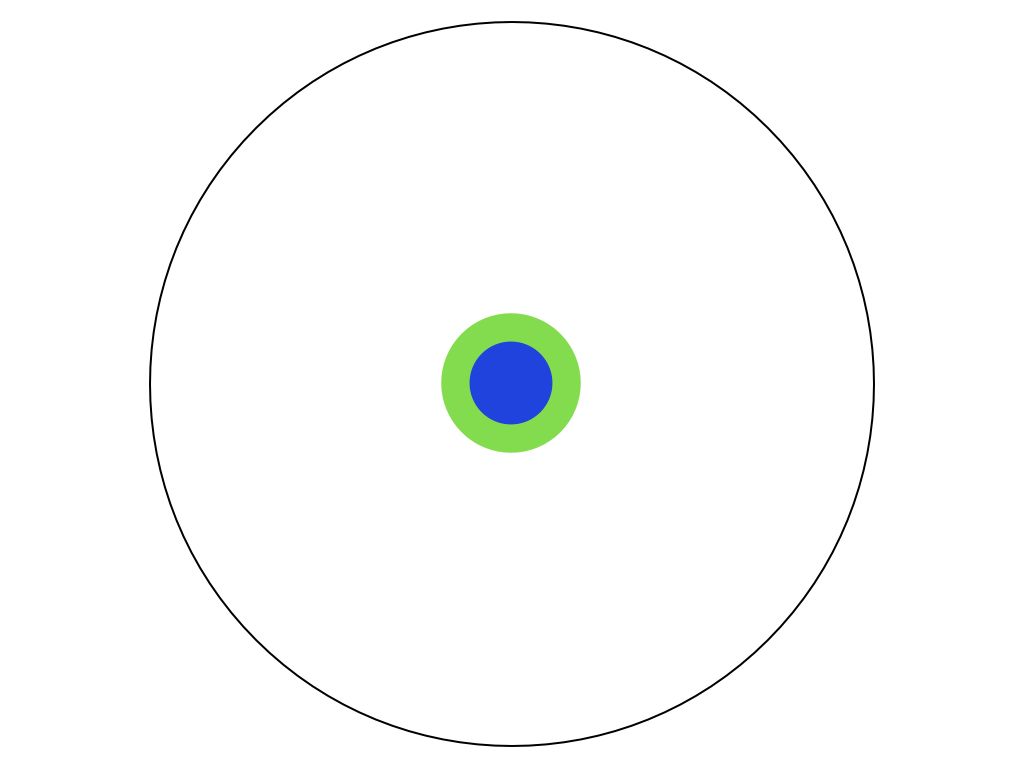
With a bachelor's degree, you gain a specialty:
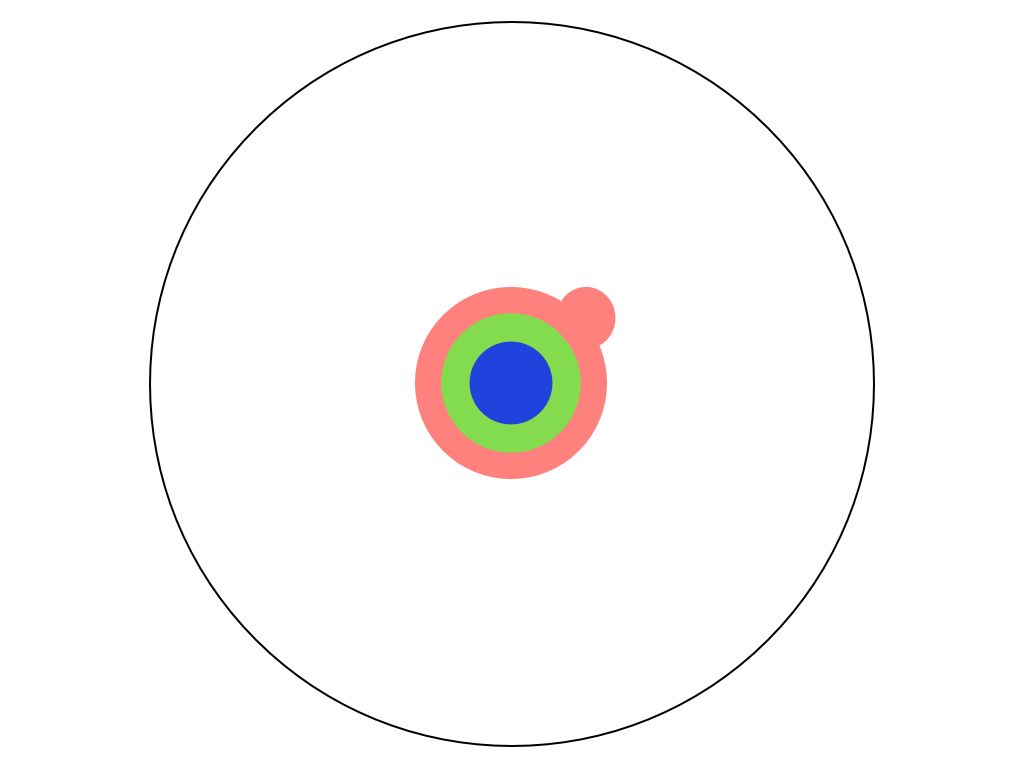
A master's degree deepens that specialty:
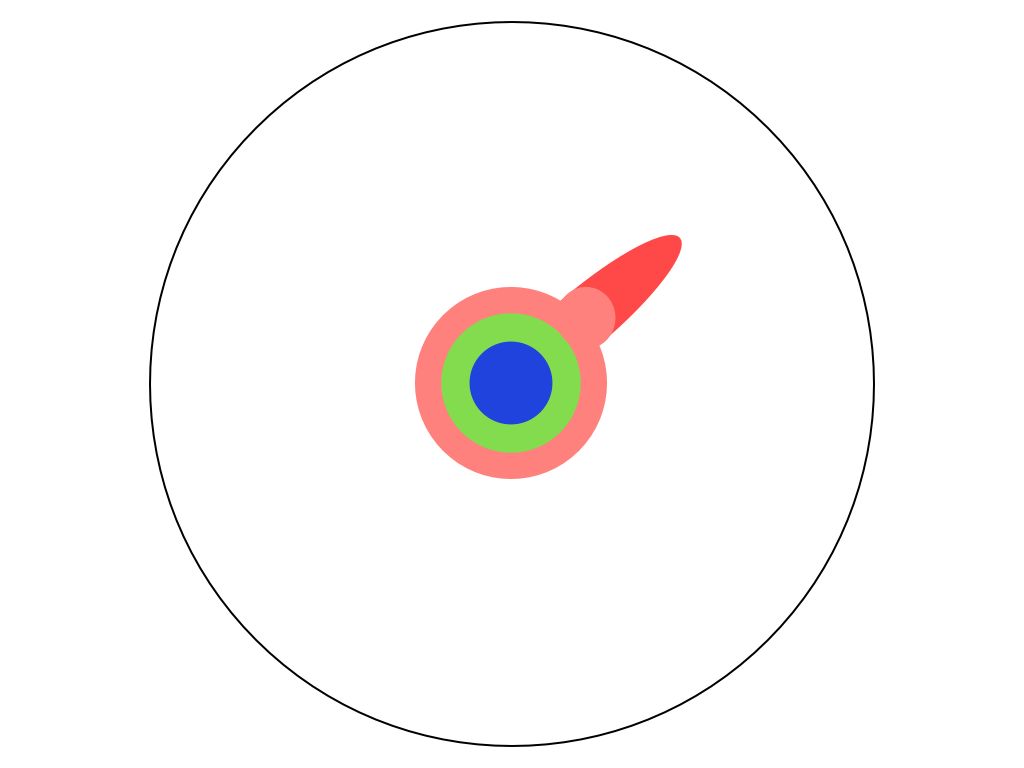
Reading research papers takes you to the edge of human knowledge:

Once you're at the boundary, you focus:
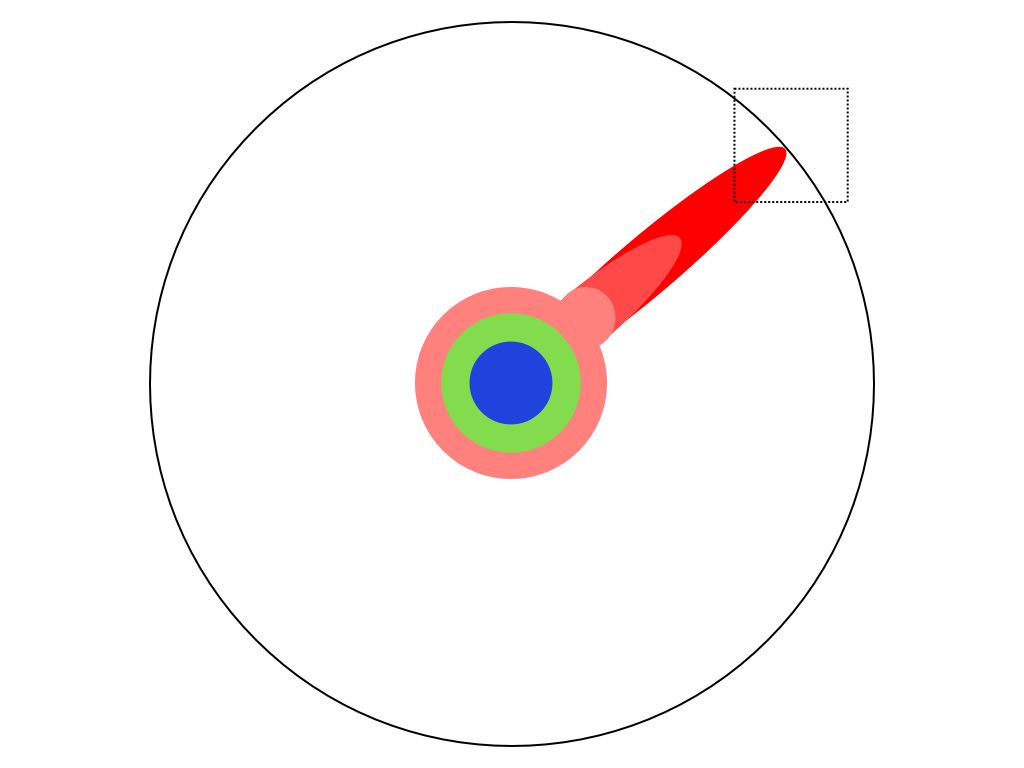
You push at the boundary for a few years:

Until one day, the boundary gives way:

And, that dent you've made is called a Ph.D.:
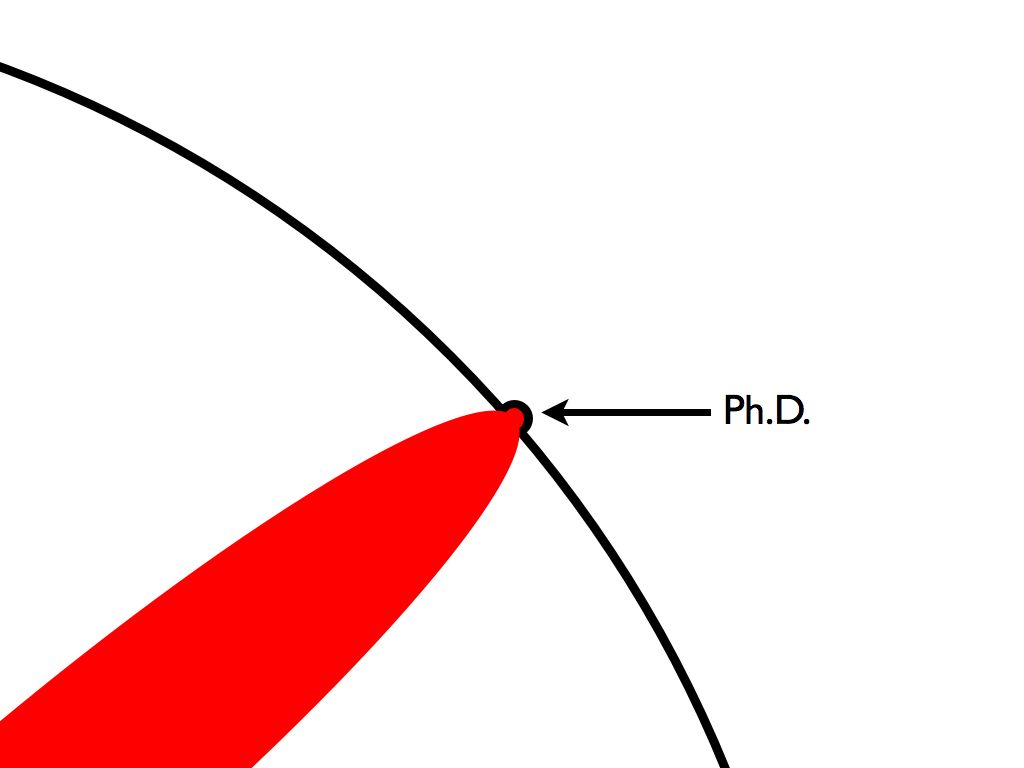
Of course, the world looks different to you now:
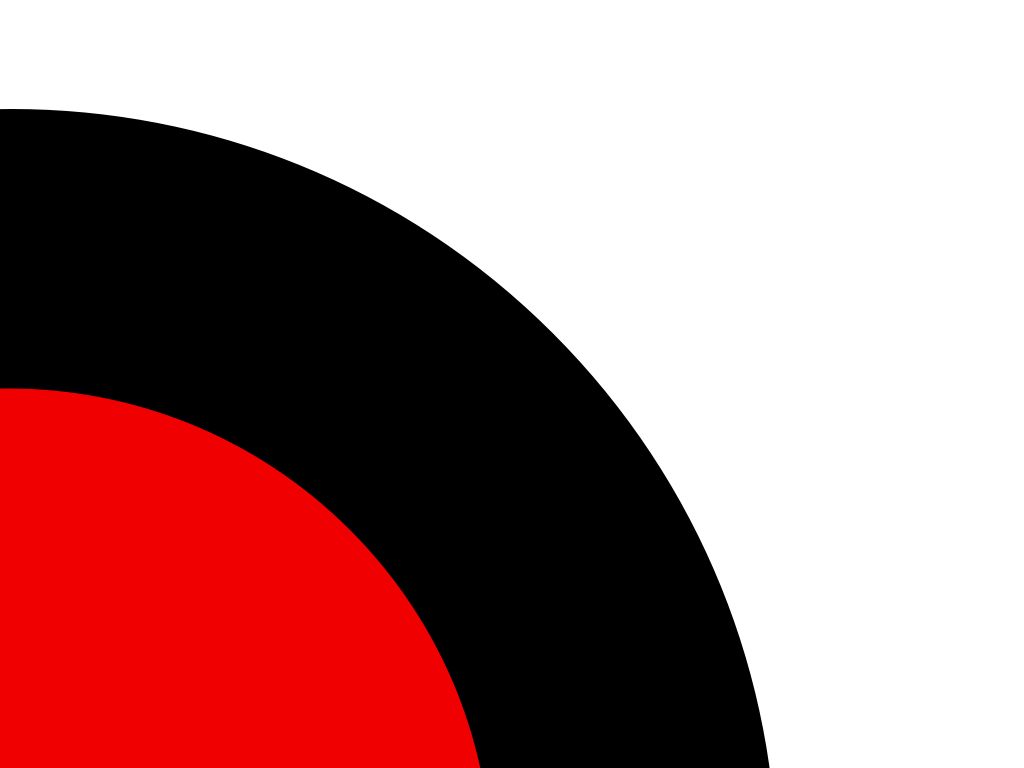
So, don't forget the bigger picture:

Keep pushing.
Link to original article here.
Monday, August 09, 2010
10th Nov 2010: Fire Safety Engineering in the UK, The State of the Art
In order to make the event as widely accessible as possible, there will be no fees associated with the event. All delegates and speakers will be responsible for their own travel, accommodation and meals. If there is sufficient interest, an optional buffet lunch and evening dinner may be organised, costs to be confirmed. A book of proceedings will be produced in advance and these may be purchased on the day at a cost of about £10 per copy. Suggestions for affordable accommodation in Edinburgh can be found on the conference website.
It is intended that there will be opportunity for about 15 to 20 presentations throughout the day. It is hoped that the oral presentations would be accompanied by a number of poster presentations as well, demonstrating the diversity and scope of the state of the art.
Three types of presentations will be considered:
1. Presentations giving an overview of the current research activities from a single institution, ideally to be presented by a relatively senior member of academic staff (if from a university) or equivalent,
2. Presentations on a recent or ongoing research project, ideally presented by a current postgraduate student or member of research staff, and
3. Presentations on the application of novel or innovative fire safety engineering practices in real construction projects, either recent, current or in the design phase.
The aim is for representatives from across the range of institutions to present recent research and advances within the broad field of fire safety engineering; including structural fire safety, CFD, flammability testing, structural modelling, fire-fighting practice, fire dynamics, etc.
In order to be considered for one of the oral presentation slots or the poster session, please submit a mini-paper of no more than four pages by 31st August 2010 via the conference webpage [www.fireseat.org]. Full details of the paper format are given on the website. As many as possible of the submitted papers will be selected for oral presentation, the selection will be made in order to present the whole spectrum of activities in the field. Authors selected for oral presentation will be given the opportunity to expand their papers up to ten pages. All other submissions will be invited to prepare posters for the conference. All mini-papers and expanded papers will be reproduced in the book of proceedings.
If you would consider coming to this event, you can submit a mini-paper based on your recent or current work and also recommending this event to your colleagues. It would be great if each institution was represented by both established and junior members.
Prof Torero interviewed by Beacons for Public Engagement
Edinburgh Beltane - Beacons for Public Engagement are funded by the UK higher education funding councils, Research Councils UK, and the Wellcome Trust
Saturday, August 07, 2010
Volume 1 of 'Coal and Peat Fires: A Global Perspective'
We are delighted to inform you that Volume 1 of 'Coal and Peat Fires: A Global Perspective' - our four volume book series - will be on the market in October 2010.
Elsevier has hosted a microsite at http://www.elsevierdirect.com/coalpeatfires where you can
- Read more about the book series
- Find the table of content and download a sample chapter from Volume 1
- Learn about how you can contribute to the online archive of coal fires
- Order the book and receive discount for early purchase
- And much more ....
We hope you enjoy the book series and we look forward to your feedback.
Sincerely,
Editors: Glenn Stracher, Anupma Prakash, Ellina V. Sokol
Guest Editors: Rudiger Gens, Guillermo Rein
Monday, August 02, 2010
When Angus, Joanne and Rory found Peat
 To revive peat three intrepid explorers from the Lab ventured out to the Pentlands to see if they could track Peat down. They didn't have to look far for Peat was found next to his friends Compost, Seeds and Pots at Pentland Plants.
To revive peat three intrepid explorers from the Lab ventured out to the Pentlands to see if they could track Peat down. They didn't have to look far for Peat was found next to his friends Compost, Seeds and Pots at Pentland Plants.
All 360 litres of Peat were collected and, while he said his goodbyes to his friends, we ventured on to the cafe. "Tea for all!" we exclaimed. "We found Peat!".


Peat is now back living in the Fire Lab waiting for the day to come when he can meet the FPA. God bless you, Peat.
Saturday, July 31, 2010
2009 Victorian Bushfires Royal Commission releases final report on "Black Saturday"
The 2009 Victorian Bushfires Royal Commission has just released its final report. The Commission conducted an extensive investigation into the causes of, the preparation for, the response to and the impact of the fires that burned throughout Victoria in late January and February 2009 and caused the death of 173 people.
The report is written and released openly and worldwide to ensure that lessons from the disaster are clearly defined and learnt:
http://www.royalcommission.vic.gov.au/Commission-Reports/Final-Report
The Final Report is the Summary document and the other four individual volumes
address the following topics:
Volume 1 - The Fires and the Fire Related Deaths,
Volume 2 - Fire Preparation, Response and Recovery,
Volume 3 - Establishment and Operation of the Commission,
Volume 4 - The Statements of Lay Witnesses.
Friday, July 30, 2010
Research and the release rate of FDS versions
Note: Fire Dynamics Simulator (FDS) is a computational fluid dynamics model of fire-driven fluid flow developed by NIST.
First, note that I am not a code developer but an user. I am a particular type of user: a researcher. An academic who studies methodologies to use some of the tools available to fire safety engineers. Hopefully I have helped or will help to develop the state of the art in fire modelling. I certainly support improvements to FDS and greatly admire the work of the FDS developers team.
For the last two years I am facing two problems stemming from the different versions of FDS that are released with some frequency. Research (my research at least) has a characteristic time that seems to be significantly longer that the time between version releases. This means that when we start a research project on modelling that includes FDS we use the newest version available but by the time the work is finishing and concluding, there are one or two new versions of FDS available. Note: PhD thesis in the UK last for three or four years.
This has led to these issues in my research group:
I - Different results from different versions
We have accidentally observed two times already (in two different PhD thesis work) that the same input file produces significantly different results in different but consecutive versions of FDS (eg v5.2.0, v5.2.5 and v5.3.0). In one case it took us months to figure out the problem. Both of these problems were discussed in due time in the FDS forum. My personal recommendation to my students is that they fix the FDS version of their interest at the beginning of the project and stay with it until the very end of the thesis.
I wonder if other researchers would like to express their views on this issue?
II - Peer reviewed of FDS results
We have had reviewers complaining and requesting rejection of our modelling papers because results are not in the latest version of FDS. NOTE: just the review process in fire and combustion typically takes anything from 3 to 16 months.
About modelling work on the Dalmarnock Fire Tests (Chp 2 of this thesis), one anonymous reviewer recently said "Given that [version] 5 has significant changes in the combustion model and other submodels, there is no value to the community in publishing a paper on FDS 4 unless the paper can demonstrate that the conclusions on FDS performance will remain valid for the current version and versions under active development".
To demonstrate that the conclusions of the work apply to the newest version of FDS effectively implies repeating the thesis work. This is not affordable in most cases, at least not for my group. Should academics fear every new version of FDS because it means one extra year of work for PhD students?
I wonder if other researchers would like to express their views on this issue?
III - Corollary
Following from issues I and II, I am confronted with the question, what happens with buildings which design was aided and approved using previous versions of FDS. What are the implications to forensic investigations that reached conclusions in court using a previous version of FDS?
Tuesday, July 27, 2010
Starting early with fire experiments

Thursday, July 22, 2010
Combustion Institute British Spring Meeting 2010 - Combustion Phenomena in Fire Science
One-Day Meeting on Combustion Phenomena in Fire Science
Combustion Institute British Section: Spring Meeting 2010
PROGRAMME of Invited Speakers:
Time | Speaker | From | Topic | ||
10.15 | Registration, coffee/tea and poster setup | ||||
10.55 | Welcome | ||||
11.00 | Enclosure fires modelling | ||||
11.40 | 2005 Buncefield oil depot explosions | ||||
12.20 | Accidental explosions modelling | ||||
13.00 | Lunch and Poster Session | ||||
14.10 | Fire suppression modelling | ||||
14.50 | Fire plume experiments | ||||
15.30 | Coffee/tea and Poster Session | ||||
16.10 | Lagging fires: Experimental, numerical and theoretical investigations. | ||||
16.50 | |||||
17.30 | Best Poster Awards | ||||
17.35 | Close |
Wednesday, July 21, 2010
One-day Conference: Emerging Technologies in Combustion, 29 Sept
29 September 2010
Heriot-Watt University, Edinburgh
[website]
The Autumn meeting of IOP Combustion Physics Group will take place at Heriot-Watt University, Edinburgh, on 29 September 2010. This one-day meeting will cover current and emerging technologies in Combustion in industry and academia. The topics will include, Clean Combustion; Coal Combustion; Carbon Capture and Storage and biochar; Underground Coal Gasification; Methane Hydrate; and Soil contaminant remediation.
Organised by the IOP Combustion Physics Group
(co-sponsored by the Combustion Institute British Section)
More information here.
Programme:
| 09:15 | Registration and Coffee |
| 09:45 | Welcome to HWU, Edinburgh, Prof. James Ritchie |
| Morning Section Section Chair: Professor David Fowler, NERC, Edinburgh | |
| 10:00 | Clean Combustion: The Challenge!Prof Doug Greenhalgh, Heriot-Watt University |
| 10:30 | Topic: To be decided Mr. Richard Dennis, Doosan Babcock |
| 11:00 | Carbon Capture and Storage: current status and implications for combustion technologies Prof. Jon Gibbins, University Edinburgh |
| 11:30 | Tea |
| 11:45 | Methane Hydrate: The Burning SnowballProf. Bahman Tohidi (Heriot-Watt University) |
| 12:15 | Discussion, Chair: Prof. David Fowler |
| 12:30 | Lunch |
| Afternoon section Session Chair: Dr. Guillermo Rein (University of Edinburgh) | |
| 13:40 | Underground Coal GasificationDr Richard Marsh, Cardiff University |
| 14:10 | Biochar as a Climate Change Mitigation Technology and Adaptation measure - promises and challenges of its deploymentDr. Ondrej Masek, University of Edinburgh |
| 14:40 | Combustion Technology for the Remediation of Industrial Soil Pollution: Environmental Benefits from Combustion ScienceDr Christine Switzer, University of Strathclyde |
| 15:10 | The combustion of fossil fuels in novel power cycles capable of capturing CO2 suitable for sequestrationDr. John Dennis, University of Cambridge |
| 15:40 | Discussion section Chair: Dr. Guillermo Rein, University of Edinburgh |
| 16:10 | Tea, Close |







